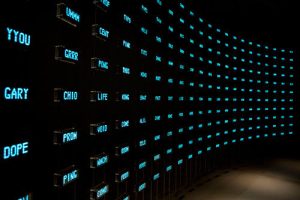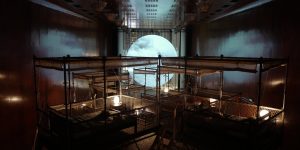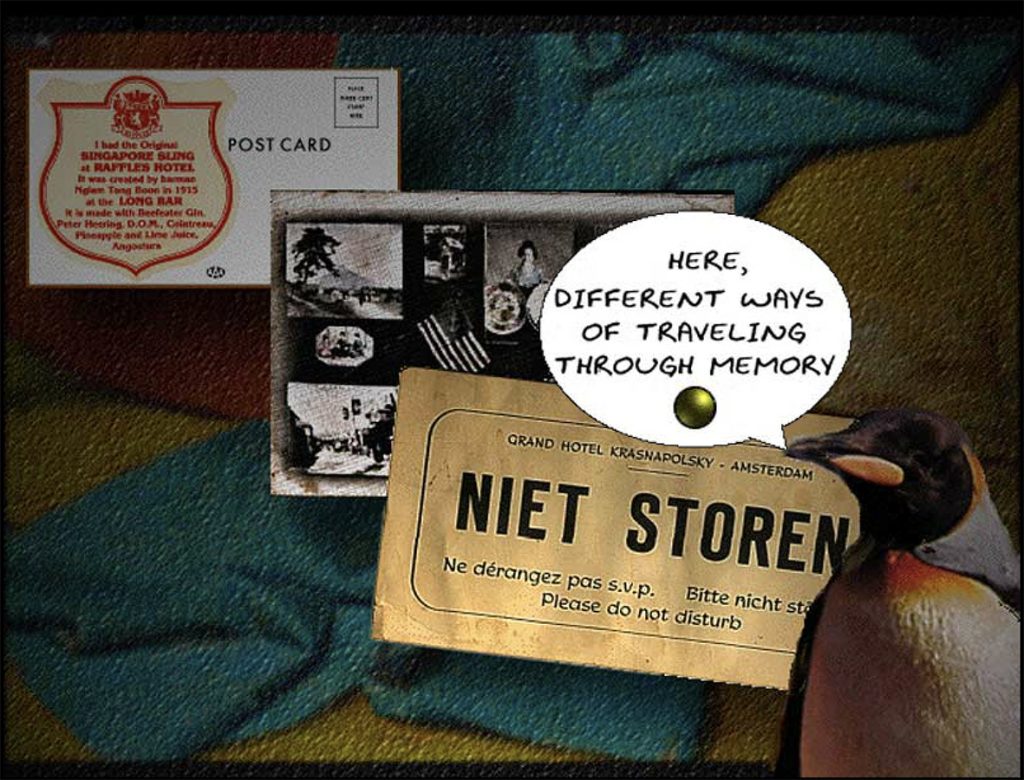Saptarshi Ghosh
‘Immemory’ by Chris Marker
A towering figure in the history of contemporary visual arts, Chris Marker worked across a diverse range of media, including writing, photography, filmmaking, videography, installation art, television and digital multimedia. He is probably best-known for his experimental short film La Jetée (1962) and the essay film Sans Soleil (1983). Along with avant garde filmmakers like Agnès Varda and Alain Resnais, Marker was associated with the Left Bank New Wave group of radical artists in France, which was known for its left-wing politics.
The fascination with memory runs throughout Marker’s oeuvre. In fact, his films, photobooks, writings, travelogues and novels can be read as attempts to “probe the deep cultural memory of the twentieth century” itself. Immemory (1997), a CD-ROM containing an inventory of Marker’s own memories, is no different.
Exploring Immemory is akin to sifting through a box full of photographs, postcards, family albums, movie posters and books, all belonging to Marker. The terrain of his memory is spread across different “zones”, such as Cinema, War, Memory, Photography, Poetry and so on. Navigating through these zones, users encounter photographs, film clips, text and music – all the scattered mementos that make up the dense layers of Marker’s memory.

Courtesy: Criterion
To build it, Marker filled dozens of floppy disks with files using an educational software used for creating slideshows for children, named Hyperstudio. He was assisted by publishers, writers and musicians Damon Krukowski and Naomi Yang. Interestingly, Marker consciously abstained from dabbling with cutting edge technologies of the day; instead, he preferred working with rudimentary digital and electronic tools which he could master himself.
To experience Immemory, click here.
Listening Post by Ben Rubin and Mark Hansen
Created by artist Ben Rubin and statistician Mark Hansen, the Listening Post (2002-05) is primarily a sonic piece made up of a text-to-speech software narrating pieces of conversations from chatrooms across the world. The installation comprises 231 electronic displays arranged in a grid on a curved wall. Each screen displays random words sourced from online conversations occurring in real-time. The words appearing in the screens, when read out by a text-to-speech tool, overlap and create strange harmonies, adding to the layers of sampled sounds and ethereal ambient music.

Courtesy: 21st Century Digital Art
The piece presents viewers with a collage of fragmented stories from online chatrooms, encouraging them to assign meanings to them and imagine the contexts in which they emerged. In the end, one is left with a feeling of awe at the “scale and immensity of human communication”.
Explaining how viewers may approach this piece, Ben Rubin says, “‘I am stuck again here.’ Someone says something like that, and you wonder, ‘Who are they? And where are they stuck? And why are they stuck again?’ To me, it’s about where my imagination goes in trying to construct what the context for some of these disembodied statements might be.”
The work also raises crucial questions on digital privacy, an issue extremely pertinent in today’s times when our online activities are being constantly monitored.
Click here to watch a demonstration of Listening Post.
SLEEPCINEMAHOTEL by Apichatpong Weerasathakul

Courtesy: Artforum
The world-renowned Thai filmmaker Apichatpong Weerasathakul is known for films like Syndromes and a Century (2006), Uncle Boonmee Who Can Recall His Past Lives (2010), which even won the Palme d’Or at Cannes, and Cemetery of Splendour (2015). Characterised by an ethereal, dream-like quality, Weerasathakul’s films feature extremely long takes, static images, moments of quietude and a dearth of action.
Weerasathakul has always been fascinated with sleeping and dreaming, and how they relate to cinema as a medium. His 2002 film Blissfully Yours concludes with a four-minute sequence of a character falling asleep; Cemetery of Splendour, on the other hand, revolves around a group of Thai soldiers suffering from a mysterious sleeping sickness. In 2016, he even organised an all-night film screening at Tate Modern, London, where he encouraged the audience to fall asleep, hoping that the images from the films would influence their dreams. The immersive video installation SLEEPCINEMAHOTEL, mounted as part of the Rotterdam International Film Festival 2018, represents the culmination of Weerasathakul’s predilections.
Envisioned as a fully functioning hotel, visitors could check in and stay overnight in a communal sleeping area. Throughout their stay, a single-channel video projection displayed hypnagogic images on a circular screen, accompanied by the sounds of flowing water and rustling leaves. The images were of people sleeping, clouds, water, boats and sleeping animals; no image was repeated during the projection. The ambience thus created was both dream-like and sleep inducing.
Weerasathakul’s intent was to make the guests conjure up new images in their minds, influenced by the ones being projected continuously. In the morning, they were asked to note down the dream images in the Dream Book.
For Weerasathakul, dreaming and the experience of watching a film are not different. Through SLEEPCINEMAHOTEL, he collapses the boundary between the collective experience of cinema and the personal experience of dreaming. Drawing parallels between dreaming and the cinematic experience, he says, “I always believe that we possess the best cinema. We don’t need other cinema, meaning that when we sleep, it’s our own image, our own experience that we edit at night and process.”
Neurosynchronia by Justine Emard
For over a decade, Justine Emard has been operating in the overlapping space between art and technology. Working with the latest technologies such as augmented reality, deep learning and artificial intelligence, Emard seeks to discover new relationships between technology and our lives.
Like most of Emard’s works, Neurosynchronia (2021) focuses on the interaction between humans and machines. An interactive video installation, the audience is invited to put on a wired headpiece. Developed in collaboration with neuroscientists, the headpiece acts as a neural interface and allows the viewer to control the installation’s virtual ecosystem with thought. An impressive feat of technology, the device presents a tangible manifestation of the interaction between the visual cortex of our brain and the virtual world generated by imagination.

Courtesy: www.justineemard.com
The viewer has to visually scan through a series of networked coloured dots and focus their sight on a particular one. Depending on which point they are concentrating on, neural systems are generated.
Emard’s piece functions in the grey zone of interaction between brain signals and technology. Exploring the origin of images in our minds, the work allows viewers to hatch images before their eyes.
Recently, Emard showed Neurosynchronia at the exhibition Terra Nullius, organised as part of Serendipity Arts Festival 2022 and curated by Pascal Beausse and Rahaab Allana.
To watch a demo of Emard’s installation at Serendipity Arts Festival, click here.
Bibliography:
- Catherine Lupton, Chris Marker: Memories of the Future, Reaktion Books (2005).
- https://www.criterion.com/current/posts/7188-the-deaths-and-rebirths-of-chris-markers-cd-rom-immemory
- https://chrismarker.org/immemory/#:~:text=In%20Immemory%2C%20Chris%20Marker%20has,physically%20exploring%20Marker’s%20memory%20itself.
- http://www.digiart21.org/art/the-listening-post
- https://www.theguardian.com/film/2018/feb/02/sleepcinemahotel-apichatpong-weerasethakul-film-sleep-dream
- https://theconversation.com/introducing-lucid-dream-cinema-movies-to-watch-while-you-sleep-91195
- https://justineemard.com/neurosynchronia/
- https://www.stirworld.com/see-features-saf-2022-an-exhibition-challenging-how-we-see-the-image-in-the-age-of-web-3-0





